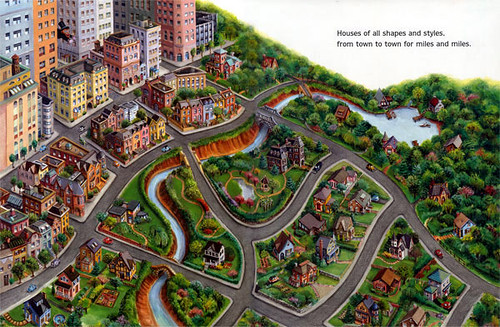Evaluating neighborhoods and the "amenityshed"
(1) are the schools adequate? Are they neighborhood schools?
(2) is this house in a low to nil crime rate area?
(3) fire rating. This can make a huge difference on yearly insurance premiums, if indeed there is a source of water close by or is the house in an all-volunteer fire department area.
(4) is the Ambulance service timely and efficient for this neighborhood?
(5) church. If a family has a preference for a certain church, the availability of that church or one like it should be checked.
(6) Is there a neighborhood association or neighborhood watch. This would also bring up association fees if there are any.
(7) One thing of importance to any home owner is the appearance of the neighborhood as a whole. Are there cluttered yards? Are there rules against junk cars being parked along the street? Do people care about the appearance of their homes to passersby? Like a well groomed yard.
But the piece reminds me that in 2007, I wrote about how local newspapers write about neighborhoods. The Washington Post has a regular feature on neighborhoods in the Saturday Real Estate section. The Examiner does a similar feature on Fridays, and the Baltimore Sun used to do this on Sundays, but they don't do it any more.
(Note that these features from past editions of newspapers are a good source of information about neighborhoods over time, and are mined by architectural historians and others for historic preservation and history information.)
The Real Estate feature in the Sunday Baltimore Sun wrote about neighborhoods in terms of the following characteristics:
• The housing stock //
• Average month's rent //
• Crime //
• Kids and schools //
• Dining in //
• Dining out //
• Recreation/outdoors //
• Nightlife //
How does your neighborhood rate on these factors? At the time I thought that was a good list. But now I realize it left a lot out.
And of course, when it comes to choosing where to live, you ought to consider the distance to work and the time required to get there, and whether or not you have efficient options (drive alone, transit, car pool, etc.). This wasn't addressed by the Sun, because in that region, even in Baltimore City, most people drive.
Relatedly, but truly a separate factor is whether or not you have to own a car in order to be able to function, get around, and participate in your community.
Labels: housing choice, housing market, neighborhood planning, urban design/placemaking, urban vs. suburban





0 Comments:
Post a Comment
<< Home